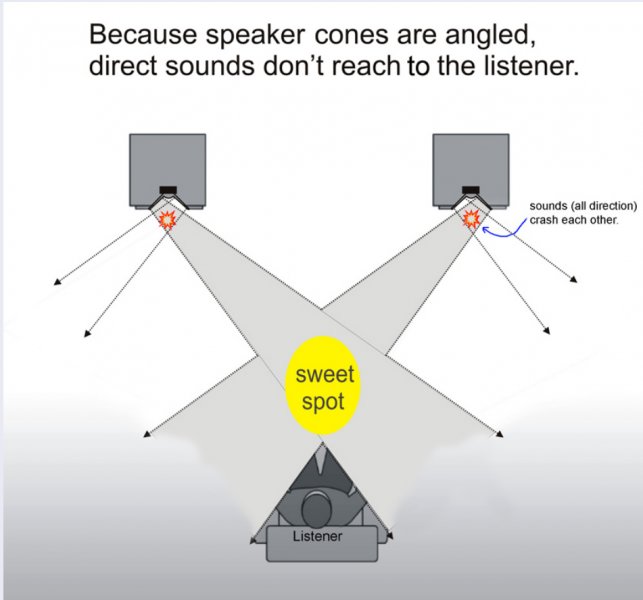I've never thought of these immediate add/cancel effects caused by early reflections as standing waves, but now that you've presented it that way, I see that they really are because they're moving in opposite directions of each other causing some degree of phase add or cancel. When I hear "standing waves" my mind immediately goes to reflections between parallel walls that create modes. Those are also standing waves but those kind can become very resonant. Those are often less of a problem than might be suspected because they don't always happen. It takes some time to build those up, so they really only come into play on sustained notes. These early reflection types don't sustain as a resonance, but they screw up the sound immediately. There are other problems with even non-modal frequencies bouncing back and forth between parallel walls. They can definitely result in smeared midbass and lower midrange, which can muck up the perception of the whole audible range.
jtcfdog said:
I can totally relate to that, but I can't say for sure what really makes those "live action" moments come to life. I have spent a lot of time messing with equalization because I have to on my DIY speaker builds. That has taught me that getting the broadband response accurate is a huge piece of it. The best I've gotten it to work has been in situations where I'm sitting pretty close to the speakers and as far away from the room walls as I can get, after spending a lot of time measuring and listening to get the overall response fine tuned. That's when those live action moments can really startle me with a sense of live presence.
The problem is, I haven't found a way to make that work equally well on all recordings, so I've come to see it as a sort of special effect. It can also heavily depend on my auditory state. Still it's a good indicator if it happens at all that a number of factors have been dialed in fairly well. Ultimately I find the setups that do this the best are hard to live with, so I seek a generally pleasing sound, not necessarily the ultimate in realism.

















